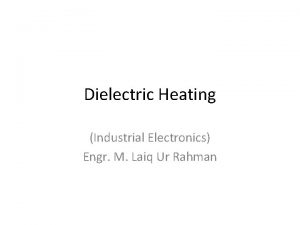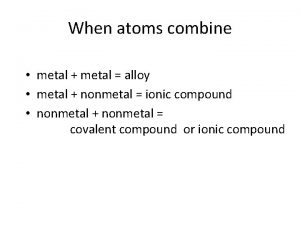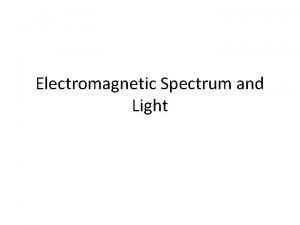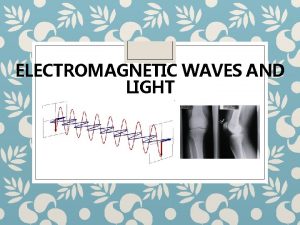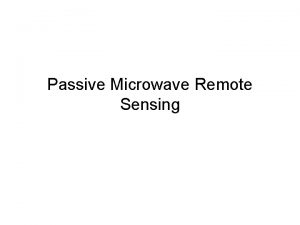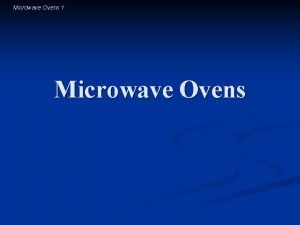Microwave Heating of Metal Microwave Power and Electromagnetic








- Slides: 8

Microwave Heating of Metal Microwave Power and Electromagnetic Energy

Introduction In 1988, one of an interesting experimental result is reported by Walkievics , who tested heating of various metal powders, and demonstrated there are differences in their heating rates metal heating had been a minor application area, because the bulk metals are not possibly heated well, different from the other materials, such as food, organics, and some kinds of ceramics.

Fundamentals > Because of small penetration depth of electromagnetic field into metals, temperature of a bulk metal cannot be raised very much, therefore, MW heating is generally limited to metal particles or films. > Ferro-magnetic metals are well heated by MW irradiation. > Heating of other metals in electromagnetic field is primarily understood that the induced eddy current on the metal surface is responsible for the Joule heating.

Eddy Current > Eddy current is generated within the skin depth of the metal surface, which, of course, is due to the occurred E- and Hfields in the metal because of the finite electric resistance. > Maxwell equation- >The full Maxwell equations are reduced to the exactly same differential equations with respect to the E- and H fields for propagation of an EM wave.

Fundamental experiments > H-field of MW is commonly utilized for ESR (electron spin resonance) measurement and special cavities are designed for their instrumentation. Recently, separated E- and H- field heating has been performed for the purpose of investigating the heating mechanisms and of discriminating the heating behaviors to fabricate new materials. In these experiments, most commonly observed tendency is that H-field is more effective for heating of metals comparing with the E- field.

Recovery of Metallic Elements > Recovery of metallic element from slag. > Recovery of metallic element from mill scale. > Recovery of metallic element from dust. > Recovery of metallic element from other industrial waste.

Application > Sintering, Joining, Metal glass and composite materials. > Metal film. > Metal reaction, combustion synthesis. > Immobilization of heavy metal contained soils, MW heating aids of glasses. > Metal hydride. > Heating of metal catalysis particles by MW.

CONCLUSION >Micro Wave heating of metals need to be analyzed considering the interaction of EM field with the metal surface. Boundary conditions required to describe the interaction were discussed. Examples of commonly observed tendency of better heating of metal particles and films in the separated H-field were introduced and both are discussed from view points of micro structural alteration by MW heating. There are varieties of application fields of MW heating of metals, in which MW characteristics of rapid, internal and selective heating are taken into consideration.
